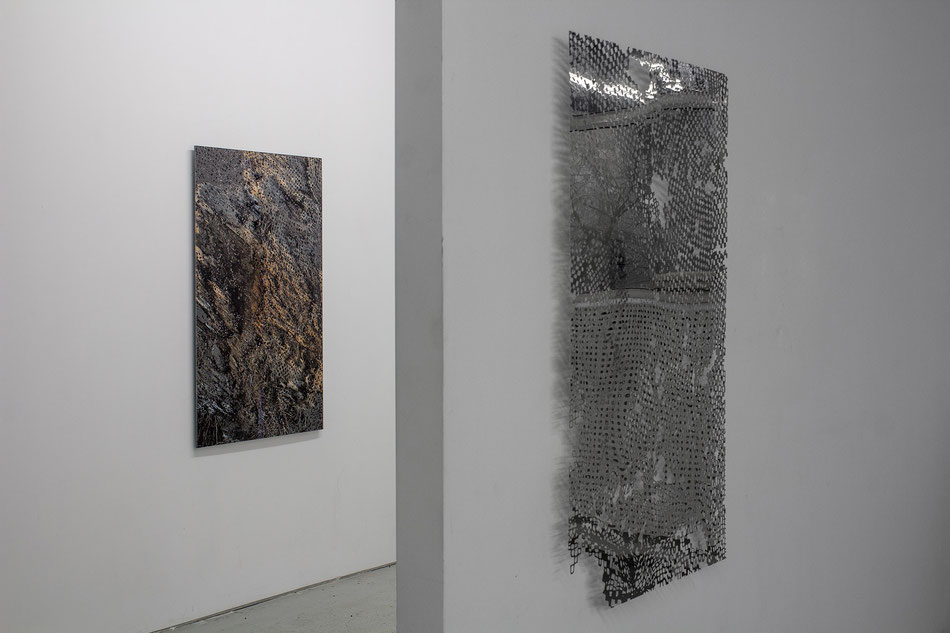- A Cave Carved in the Shape of a Waking Person
- A Cave Carved in the Shape od a Waking Person
- Time Settings
- Indifferent Star
- I have no time
- Shape of the moment
- Reflex Wander
- Composition With Missing Words
- Volume of Effort
- Stres
- It Takes Time
- The Resonance
- Unplanned Images
- Leak
- I've Seen Too Much
- There is No Such Thing
- \Biography\
Reflex Wander
Stereo, Warsaw, PL
© Mateusz Sadowski
2017

















The Veil of the moment is an experimental animated film made by Mateusz Sadowski with the sound made by Dawid Szczęsny. The film features studio spatial arrangements and author's printed self portraits - animated together in the stop-motion animation technique. By the use of the primitive, laborious method of production the film depicts fugacious feelings of nostalgia, becoming itself a form of a raw visual poetry.





“I rotate three-dimensional objects. Mentally”, says Eric Yang, one of the characters in a short story by David Foster Wallace*. “I close my eyes and form a perfect detailed image of any object. From any angle. Then I rotate it.” Yang has a unique ability and also an unusual occupation – he works in a field team of the Mental Health Department, visiting the most severe cases of the “isolated”.
The enigmatic work of Mateusz Sadowski resists explanations. Mostly because the subject is the game of appearances. Here, it is not so much that nothing is what it seems, but everything is more than it appears to be. Sadowski’s title “Wanders” take place both in nature and in thoughts. As a result, half-transparent images interpenetrate and pile up following unusual associations. Simultaneously, doubts about the character of representations proliferate (Sadowski also introduces the motif of new technologies and issues of film and photographic media). This process is about provoking cognitive anxiety at the same time avoiding exaggeration (“Something like order-in-chaos”, as Yang would put it). Thanks to that, we are granted the feeling that there is a key to solving this riddle. The same conviction makes Sadowski spin his own suspicions about the nature of things and thus we share the basic question with him.
A characteristic trait of this work emerges from a controlled muddle of imaging, layers and motifs. As long as perception, simply speaking, lies in the reduction of dimensions (the brain captures a memory in an image, an experience in words, etc.), Sadowski – aware of that loss – reconstructs the dimension discarded in the perception process. This is why he puts one image behind the other, pairs off details, and exposes the salience of relations. When he raises an issue, he looks at it in space as if he was rotating a prism in his hands.
“I can see textures and imperfections and the play of light and shadows on the objects. (…) It’s a talent I have.” That’s how Yang introduces himself to his new colleagues. He closes his eyes and rotates a stone with his head.
Michal Lasota
_________
* David Foster Wallace, “Church Not Made with Hands” [in:] "Brief Interviews with Hideous Men".
„Umiem obracać trójwymiarowe przedmioty. Mentalnie.” mówi Eric Yang, jeden z bohaterów opowiadania Davida Fostera Wallace’a*. „Zamykam oczy
i stwarzam sobie szczegółowy obraz dowolnego obiektu. Pod dowolnym kątem. A potem go obracam”. Yang posiada wyjątkową zdolność i ma nietypowe zajęcie – pracuje w brygadzie terenowej Zakładu Zdrowia Psychicznego, odwiedzając najcięższe przypadki „wyizolowanych”.
Enigmatyczna twórczość Mateusza Sadowskiego stawia opór wyjaśnieniom. Głównie dlatego, że jej przedmiotem jest gra pozorów. Tutaj nie tyle nic nie jest tym, czym się wydaje, co wszystko jest czymś więcej, niż na to wygląda.
Tytułowe „wędrówki” Sadowski odbywa zarówno w naturze, jak w myślach. W efekcie półprzezroczyste obrazy przenikają się i nawarstwiają według nieoczywistych skojarzeń. Równolegle mnożą się wątpliwości wobec charakteru przedstawień (Sadowski wprowadza także wątek nowych technologii oraz kwestie medium filmowego i fotograficznego).
Zabieg polega na sprowokowaniu niepokoju poznawczego, jednocześnie unikając przesady („Rzecz z gatunku porządek-w-chaosie”, powiedziałby Yang). Dzięki temu podarowane nam zostaje poczucie, że istnieje klucz do tej zagadki. To samo przekonanie każe Sadowskiemu snuć własne podejrzenia wobec istoty rzeczy, a więc dzielimy z nim podstawowe pytanie.
Z kontrolowanej gmatwaniny obrazowań, warstw i wątków wyłania się cecha charakterystyczna tej twórczości. O ile postrzeganie polega, najprościej rzecz ujmując, na redukcji wymiarów (umysł zamyka wspomnienie w obrazie, doświadczenie w słowach itd.), to Sadowski – świadomy tej straty – rekonstruuje odrzucony w procesie percepcji wymiar. Dlatego jeden obraz ustawia za drugim, kojarzy ze sobą detale, eksponuje istotność relacji. Gdy stawia problem to przygląda mu się w przestrzeni, jakby obracał w dłoniach pryzmat.
„Widzę nawet fakturę, niedoskonałości i grę światłocienia na przedmiotach (…) To unikalny talent”, przedstawia się swoim nowym kolegom Yang, zamyka oczy i obraca kamień i głowę.
Michał Lasota
_________________
* David Foster Wallace, „Kościół nie ludzką ręką uczyniony” [w:] „Krótkie wywiady z paskudnymi ludźmi”, przekł. Jolanta Kozak, WAB 2016, s. 227-247
